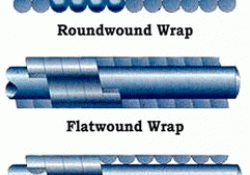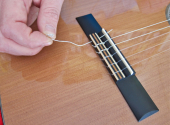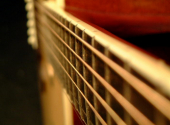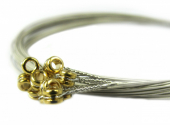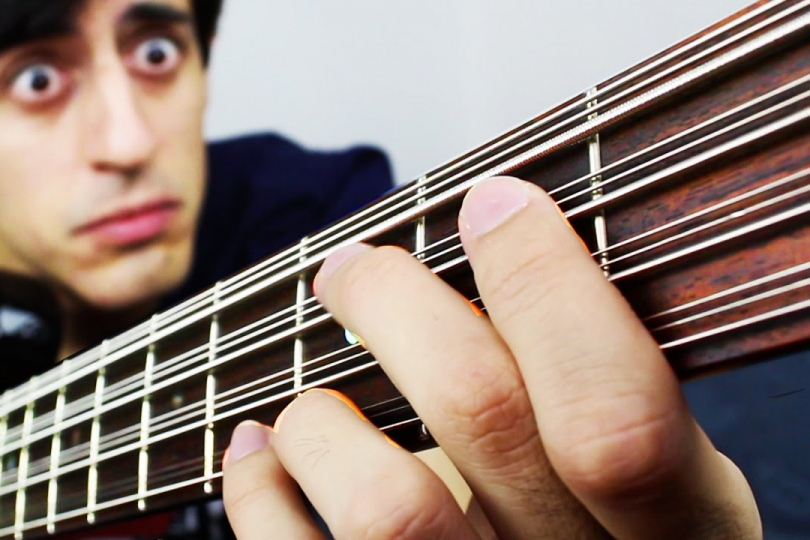
How To Choose the Right Strings for Electric Bass Guitar
Damned if every tiny variation in texture, tone and string tension isn't already noticeable with guitar strings—now imagine what that means for the majestic proportions of bass strings. If you choose the wrong kind, it's frustrating, and with basses especially, because each pluck of the string will remind you of your mispurchase.
Certain types of strings can give your instrument a radically different character. For beginners or players switching to bass from guitar, the wide variety of bass string types can be confusing. This quick guide will show you three parameters to help you choose the right set for your instrument and playing style.
String thickness (gauge)
The robustness or thickness of the strings has a very significant impact on tone and playability. While thicker strings have a more robust tone, they are also significantly more demanding on your fretting hand. Expect a faster onset of fatigue and a longer acclimation time.
There is no fixed rule for choosing the right string thickness. Even the manufacturers themselves have no clear standards for the size of each string in a set. From a player's point of view, it's all about what sound you're looking for and what inspires you most when you play.
A good starting point is the medium string thickness - usually .045 to .105 for a four-string bass (the numbers are a reference to the English unit of measurement of inches). You can find these string sizes on new instruments in music stores. This is a golden mean, but it is not optimal for everyone.
For players with smaller finger sizes or technically oriented bassists, the medium thickness can be limiting in their playing aspirations. In this case, it's a good idea to reach for the thinner .040-.100 (light) or even .035-.095 (super light) option. Country and jazz players will also appreciate them, as their parts are full of walking bass lines with lots of notes, and they will appreciate less left hand fatigue when playing for extended periods. The thinner strings are also good for slapping and tapping, but be careful not to overdo it and produce too much buzzing and clacking when the strings come in contact with the frets due to the lighter tension.
The medium thickness may not even suit bassists who downtune. Doom, metal, and stoner rock all rely on heavily downtuned guitars, and bassists of these styles need a .050-.110 (heavy) or .055-.115 (extra heavy) size. Thicker strings have higher tension and therefore tolerate tuning better. Players need to feel the natural resistance of the string so that they don't find themselves playing on a worn out waistband.
Overview of standard string sizes for four-string bass guitar:
Super Light - .035 to .095
Light - .040 to .100
Medium - .045 to .105
Heavy - .050 to .110
Extra Heavy - .055 to .115
Winding
All electric bass strings share the same basic construction—a steel core wire with a winding around it. And it is that second wire, which is wrapped around the basic steel one, that has a surprisingly large number of variations with a diametrically different impact on the character of the tone. Here is an overview of the most widely used winding methods:
Roundwound
Currently the most common type of bass strings. Their winding is steel or nickel and is made of round wire, so the string has a distinctive indentation that you can feel under your fingers. Their sound is bright, piercing with the most aggressive tone of any type of winding. That's why they're a favorite among rock and funk players. Instrument manufacturers fit new basses with them by default, and most famous players also use this type of string.
Flatwound
Until the 1960s, this was the only type of string for electric bass guitar. As the name suggests, it is a completely flat wire wrapped around a steel core. They have a smooth surface and are very comfortable to the touch. Their tone is also darker and less piercing. Popular with jazz, blues, and soul players. They are often fitted to fretless basses because not only do they support the sonic character of these instruments, they also save their fingerboards from too much wear.
Groundwound/Halfwound
Hybrid between roundwound and flatwound. At first sight, they look like flatwounds, but they are actually basically roundwound strings that are ground down for a smoother feel. So "round on the inside, flat on the outside," if you will. They combine the sonic virtues of roundwound strings with the bright and penetrating tone, while retaining the smoothness and user-friendliness of flatwound strings.
Tapewound
The ideal choice for bassists looking for a double bass sound. These black strings have a nylon twist and have a dark and warm tone. Very specific strings that you won't find in the average musical instrument store.
Taperwound
This is not a type of winding (they come in all three above-mentioned varieties), but rather a string that is narrower on the end that sits on the bridge saddle. The reason for this is better contact with the bridge (especially the B and E strings) and more sustain as a result.
Materials
So you have the thickness and type of winding sorted out, now you just need to know what material the strings are made of and what other treatments they may have. The tone and sustain of the strings are highly dependent on this factor.
Steel (stainless steel) - a popular option for rock, metal and fusion players, these strings have an extra punchy tone with a piano-like character and excellent resistance to corrosion.
Pure nickel - ideal for all vintage tones with a softer and warmer character, they have a lower magnetic response. Popular with country and soul players.
Nickel plated steel - a comfortable and popular compromise between the piercing power of steel and the warmth of nickel strings. The choice of most players.
Copper plated steel - the bright resonance of steel with a copper finish for acoustic character with plenty of higher harmonics. Great on acoustic basses.
Polymer protection - thanks to Elixir Strings (the pioneers of this technology), almost all manufacturers now offer polymer string protection. The longer string life is redeemed by a somewhat "rubbery" feel when playing, but it all depends on the player's perspective. You love it or you hate it.
Color variations - DR Strings fans can't get enough of their color combinations. This is a very attractive polymer finish that has primarily visual impact.
Finally, a little note about the steel core bass strings. Surprisingly, the most commonly used is hex-core wire with a hexagonal shape. DR Strings makes a version with round wire, so the winding is tighter, the string has more tension, is easier to tune and easier to slap. The disadvantage is that it is harder to pull and bend the string.
Was this article helpful to you? Let us know in the comments down below.
If you have found an error or typo in the article, please let us know by e-mail info@insounder.org.

